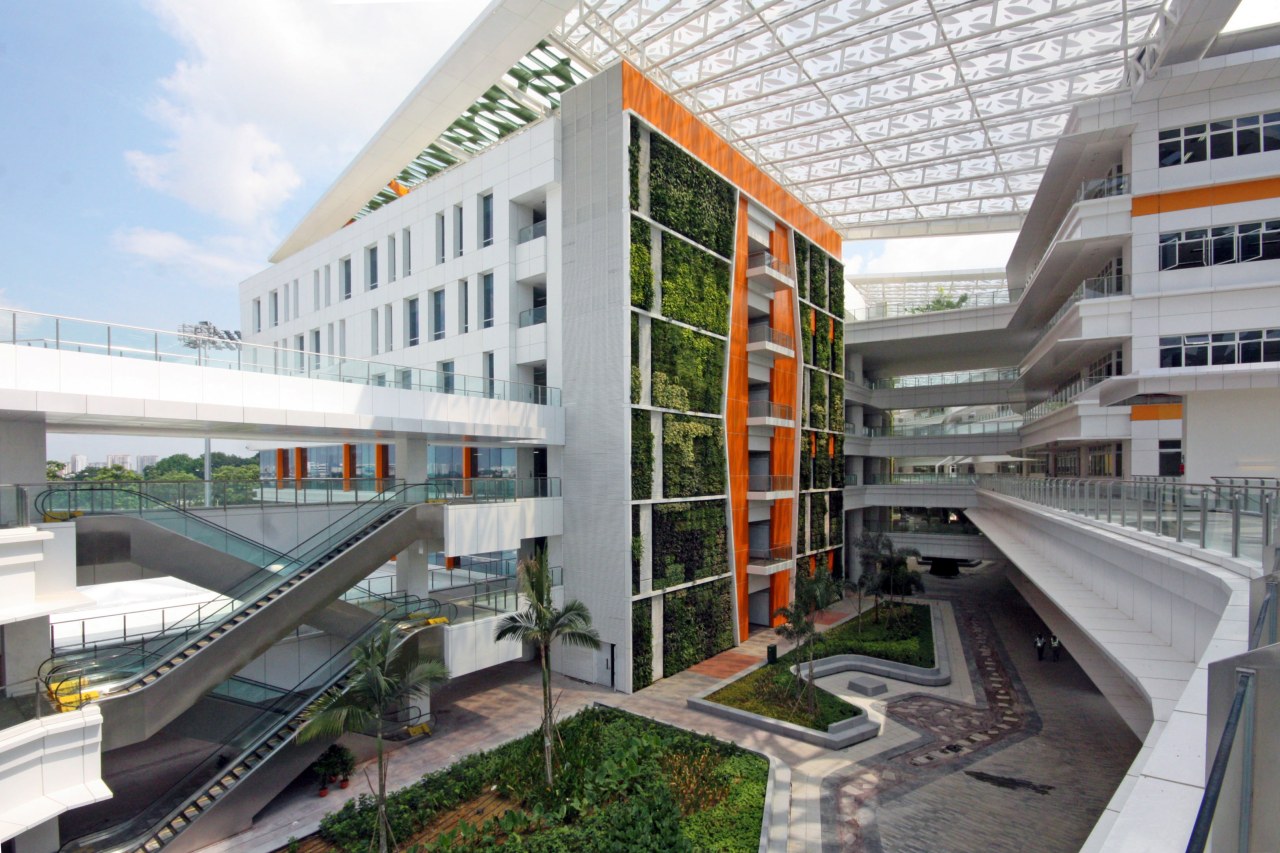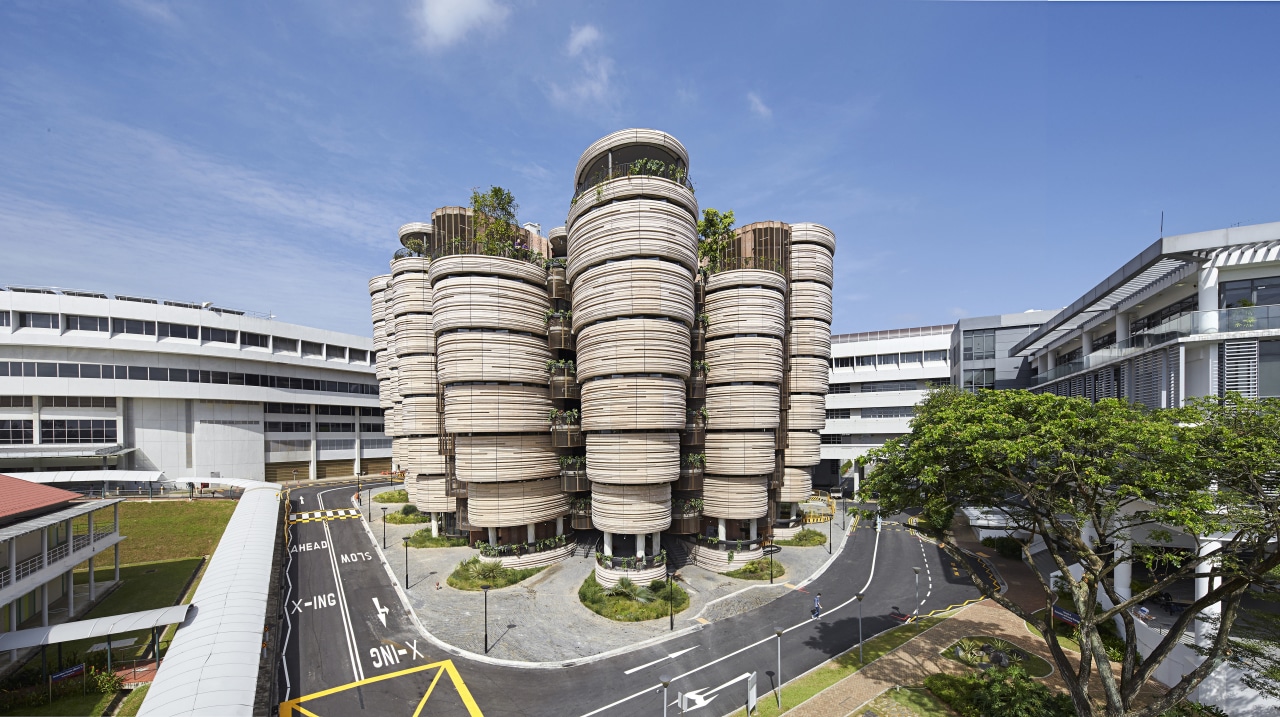Expert perspective on sustainable architecture in Singapore
Following on from his keynote address at Green Property Summit '17, Dr John Keung, Dean, Building and Construction Authority Academy, outlines Singapore's green building journey

Singapore is a small, high-rise, high density island city state with no natural resources, other than a deep sea port and a strategic location in Southeast Asia. We have relatively high humidity, with temperature falling within the range of 25-35ºC, making us extremely dependent on cooling systems to make our indoor environments comfortable. It is therefore a necessity for us to find effective ways to help reduce the carbon, water and waste footprints of our buildings in the long term.
Sustainable urban development has always had a prominent role in Singapore's development. In the early years of our independence, besides focusing on economic growth, we had designed our buildings to make good use of natural ventilation and lighting, with efficient use of water.
In 1979, we made a bold move to incorporate in our building regulations the Overall Thermal Transfer Value, a standard for building envelope thermal performance, to reduce the heat gain of buildings.
In the 1990s, we developed the energy efficiency standards for lighting and air-conditioning systems to raise the energy efficiency of new buildings.
However, our formal recognition of green buildings under a comprehensive assessment framework only started about 12 years ago, with the launch of the BCA Green Mark a rating system to evaluate a building's environmental impact and recognise its sustainability performance. The BCA Green Mark was designed specifically for buildings in the tropics.
We had also set an ambitious national target to green at least 80 per cent of the buildings in Singapore by 2030. About one third of our entire building stock in Singapore, including existing buildings, has been Green Mark certified so far.

We were able to achieve this in only slightly more than a decade by a combination of various factors.
First, our public sector walked the talk in requiring all new public projects to be certified to the highest Green Mark rating Platinum.
We also took the lead in the green building movement by rolling out three successive green building masterplans, setting minimum standards and legislation and requiring Government Land Sale (GLS) sites in strategic areas to achieve a BCA Green Mark standard at the Platinum and GoldPLUS levels.
Second, the government gave out monetary incentives as well as extra gross floor area if private developers were able to meet the highest Green Mark standards.
We took a carrot and stick approach, but legislation and incentives will not get us very far if the industry is not ready. So, we also had to advance green building capabilities in the industry. We have set a target of training up to 20,000 green collar workers by 2020. Today, we have about 15,000 people trained in green building design, construction and maintenance.
We are now expanding our focus on building occupants and tenants, as consumer-driven demand is the most sustainable driving force for the green building movement in the long term. This is our most challenging task, thus far, but one that is necessary. We try to sweeten the deal by providing incentives and financial assistance to the small and medium-sized companies that may require more help.

As global citizens, cities around the world have a key role to play in helping to cut the long term carbon footprint. Following the COP21 Paris Agreement, cities that have yet to jump on the bandwagon are likely to do so soon.
So, can Singapore's green building formula be replicated in other cities? Certainly.
With our modest success and experience over the past decade, our local practitioners have gone on to lend our expertise to multinational projects such as the Sino-Singapore Tianjin Eco-city and Sino-Singapore Guangzhou Knowledge City, as well as worked with our counterparts to develop green building standards in other countries.
Our green building movement has also put us in good stead to go further and ensure that our built environment is future-ready. We have even set our sights high on a long term vision of achieving Positive Energy Low-Rise, Zero Energy Medium-Rise and Super Low Energy High-Rise buildings.
Concurrently, we are on the look-out for breakthroughs in research, development and demonstration to achieve the most cost-effective green building solution of the future. That is why we invested in a testing laboratory in collaboration with Lawrence Berkeley National Laboratory. Named the BCA SkyLab, it is the first high-rise rotatable laboratory in the world for the tropics, and will help our partners in the industry to better test new energy-saving technologies amid real-world conditions. The SkyLab rotates to allow the study of the performance of building systems, building energy use and how indoor environmental parameters change in a variety of orientations relative to the sun.
Although we are limited by size, Singapore has big plans to push the green building agenda in the region. Because we know that we want to leave behind a better, more sustainable built environment for the benefit of our future generations.
Story by: Trendsideas
Home kitchen bathroom commercial design
From farmhouse to farmstead
Walk this way – garden pathways to lead your thinking
Water, water, not everywhere
Commercial Design Trends Vol. 33/2C
The Property Council New Zealand Rider Levett Bucknall Property Industry Awards are New Zealand’s premier commercial pro...
Read More






